Key takeaways:
- Remote work culture emphasizes the importance of maintaining connections through virtual interactions and setting clear work-life boundaries to enhance focus and personal time.
- The Covid-19 pandemic necessitated rapid adaptation to remote work, highlighting challenges such as isolation, blurred boundaries, and the need for new communication norms.
- Key benefits of remote work include flexibility, increased productivity, and opportunities for global collaboration, which foster creativity and diverse perspectives.
- Effective strategies for adapting to remote work include establishing dedicated workspaces, utilizing technology for connection, and implementing structured breaks to maintain mental well-being.
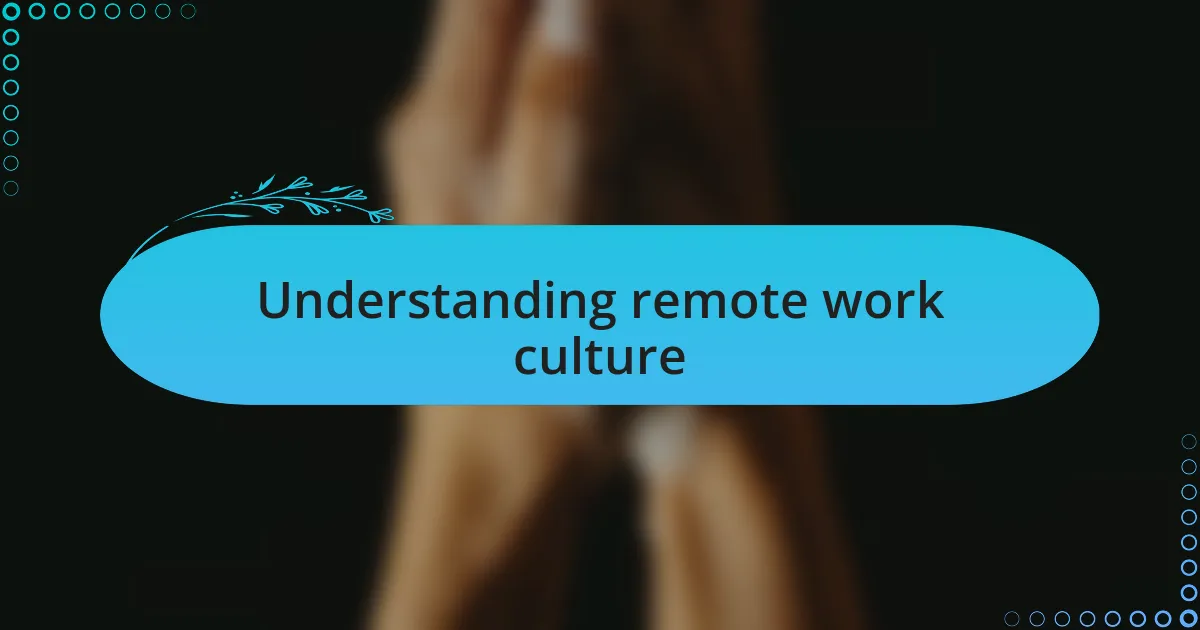
Understanding remote work culture
Remote work culture has transformed the way we view our jobs and interactions. I remember the initial excitement of shedding the daily commute, but that soon gave way to questions: How do you maintain camaraderie from a distance? Through virtual coffee breaks and chat channels, I learned that connections can flourish even without fisheye lenses and shared office spaces.
As I adapted to this new work environment, I discovered the importance of setting clear boundaries. At first, I found it challenging to switch off my work brain. Are you finding it hard to disconnect too? I carved out specific hours for productivity, which not only boosted my focus but also helped me reclaim my evenings for personal time, a lesson I wish I had learned sooner.
The emotional landscape of remote work is a mixed bag, filled with both freedom and isolation. I often reminisce about the buzz of spontaneous brainstorming sessions with colleagues. Those moments sparked creativity, but I soon realized that virtual brainstorming requires a different kind of effort. How do you keep creativity alive when face-to-face interactions are limited? I began scheduling regular check-ins, which helped foster a sense of ongoing collaboration and community. It reminded me that remote work is not just about where you are, but rather how you choose to connect.
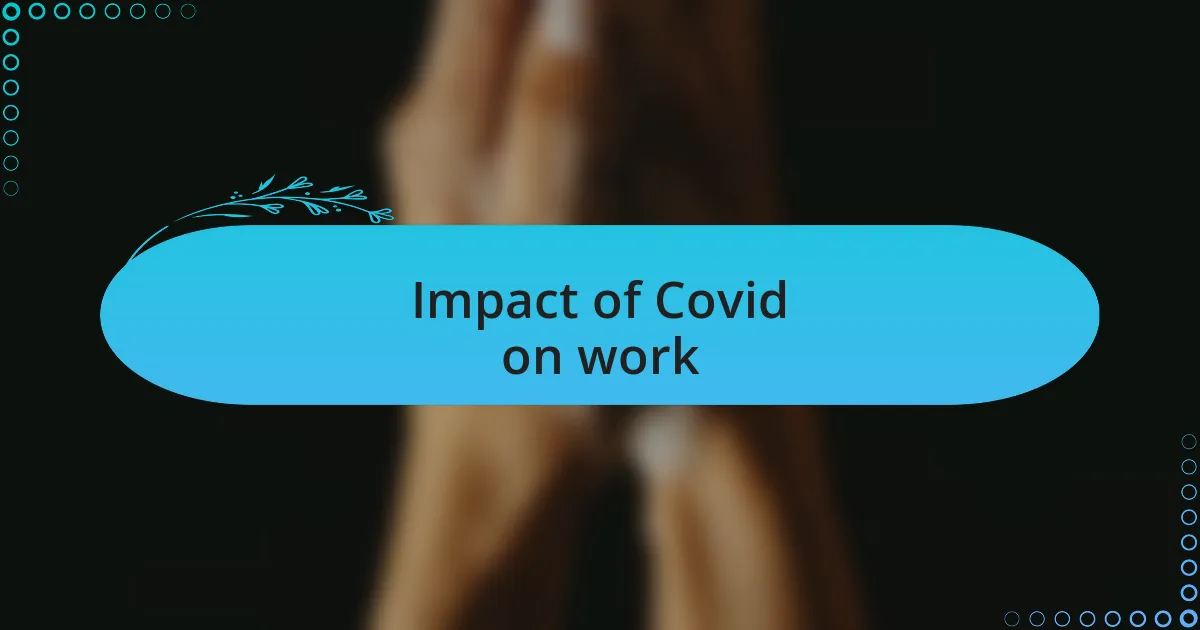
Impact of Covid on work
The onset of Covid-19 forced many organizations to pivot quickly to remote work, radically altering our professional landscapes. I vividly recall the shock of seeing my colleagues for the first time on a screen instead of across the conference table. That initial confusion led to a surge of improvisation; we had to develop new communication norms almost overnight. Did you ever feel like you were juggling an entirely different job just to maintain those connections?
As boundaries blurred between home and work, I found myself wrestling with distractions that came hand-in-hand with remote work. There were days when my kitchen table transformed into an office, and I struggled to concentrate with the constant buzz of household tasks. I began to wonder: how do you keep your productivity up when your couch is so inviting? Creating a designated workspace turned out to be essential for my mental clarity; it became a physical reminder that, at least during work hours, I was in “work mode.”
The resulting shift also highlighted the mental strain that many of us were under. I remember feeling a wave of anxiety as deadlines loomed, compounded by the isolation. Has anyone else grappled with the feeling of being disconnected from a team when everything was virtual? To combat that, I started initiating casual video calls with coworkers, which transformed my entire experience. These small, social moments didn’t just ease my anxiety; they reminded me that we were all navigating this new reality together.
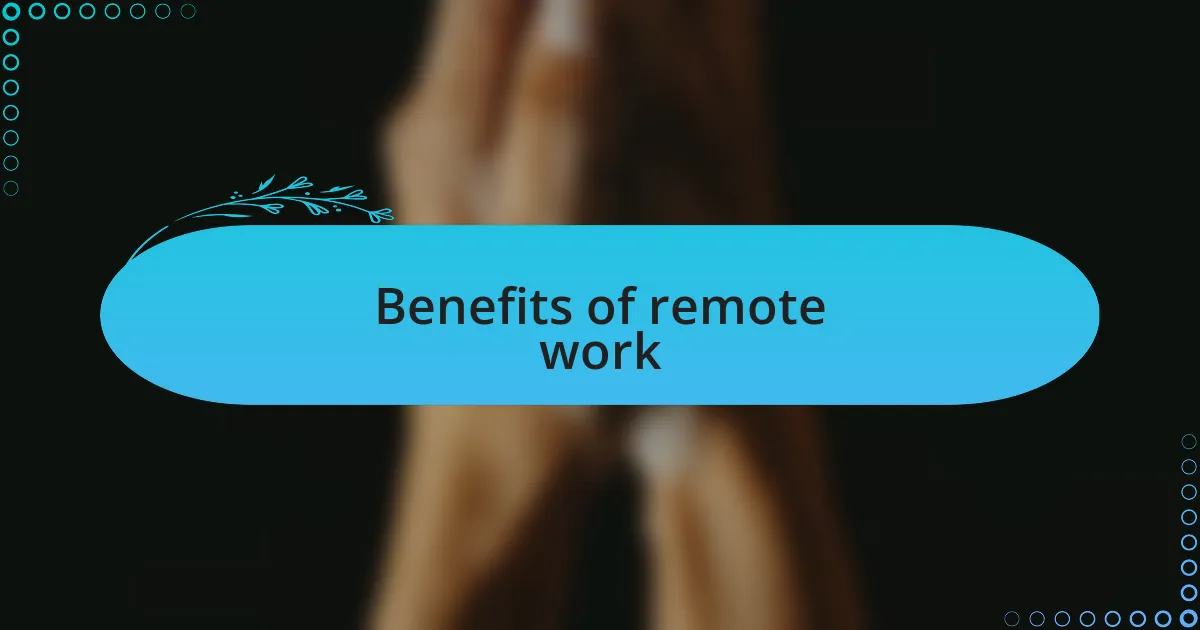
Benefits of remote work
One undeniable benefit of remote work is the flexibility it offers. I remember being able to roll out of bed and into a meeting without the stress of a commute. What a relief it was to reclaim that time! It’s fascinating how those extra minutes—previously lost to traffic—could be redirected towards self-care activities like meditation or a quick workout, shaping a healthier daily routine.
Another significant advantage for me was the increased focus I experienced. With fewer office distractions—like spontaneous conversations or unexpected meetings—I found I could dive deeper into my tasks. It was like discovering a hidden ability; tasks that once felt daunting became manageable, even enjoyable. Has anyone else noticed how much more you can accomplish when you choose your workspace?
Additionally, remote work opened doors to collaboration with people across the globe. I distinctly recall a project that brought together teams from different continents. The varying perspectives enriched our discussions, sparking creativity in ways I had never imagined. Isn’t it intriguing how technology can dissolve barriers, giving us a broader canvas to connect and innovate?

Challenges of remote work
Remote work undeniably comes with its set of challenges. For me, one of the toughest aspects was the blurred line between my work and personal life. I recall a weekend when I sat down to enjoy a movie, only to be interrupted by thoughts of unfinished tasks. It was frustrating to feel like I was always “on,” making it difficult to truly unwind. Have you ever felt that nagging sense of obligation even during your downtime?
Another significant hurdle I faced was the isolation that can stem from working alone. There were days when I missed the casual banter and camaraderie of an office environment. I vividly remember a week when I felt particularly disconnected. I turned to virtual coffee breaks with colleagues, and while it helped, it never quite replicated the magic of in-person interactions. Has anyone else sought out new ways to create connection in a remote setting?
Communication also became a challenging factor in my remote work journey. While emails and chats are handy, they sometimes lack the nuance of face-to-face conversations. I found myself second-guessing the tone of my messages, worried that something I wrote could be misinterpreted. It made me long for those quick, clarifying chats that happen naturally in an office. How many of you have experienced miscommunication due to the limits of digital communication?
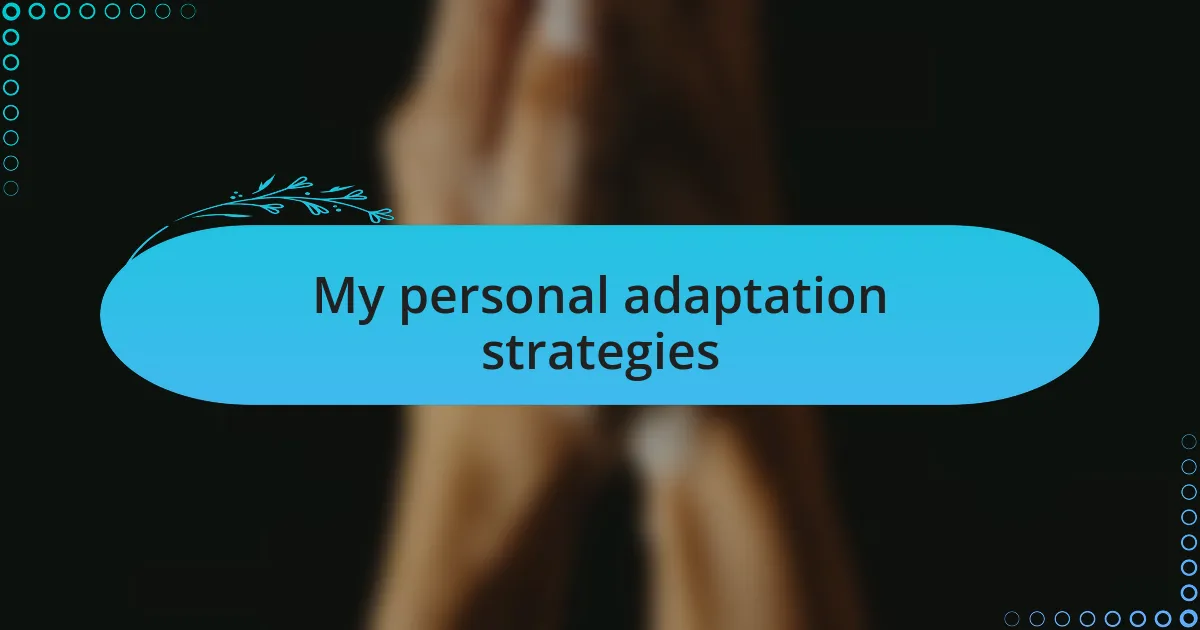
My personal adaptation strategies
Finding effective ways to adapt to remote work was essential for my productivity and mental well-being. One strategy I embraced was setting strict boundaries around my work hours. I designated a specific space in my home as my “office,” which helped to mentally separate work from leisure. This small change made a significant difference; I felt less overwhelmed, and I could focus better without the constant reminder of work lingering in my personal space. Have you tried creating a dedicated workspace?
Another approach I took was infusing my day with structured breaks. At first, I would plow through tasks without taking time to recharge, only to find myself emotionally drained and less effective. Now, I schedule short breaks to step outside or engage in a hobby. I remember one particular afternoon when I took a stroll in my neighborhood, where the fresh air sparked my creativity. How do you ensure you take breaks throughout your workday?
Lastly, I leveraged technology to foster connection, opting for video calls over mere messaging when possible. While it doesn’t fully replicate in-person interaction, I’ve found that seeing my colleagues’ faces adds a layer of warmth and engenders a sense of community. In one memorable team meeting, we spent a few moments sharing personal stories and laughed about our new “office outfits,” which brightened my day immensely. What small adjustments have you made to enhance your virtual interactions?
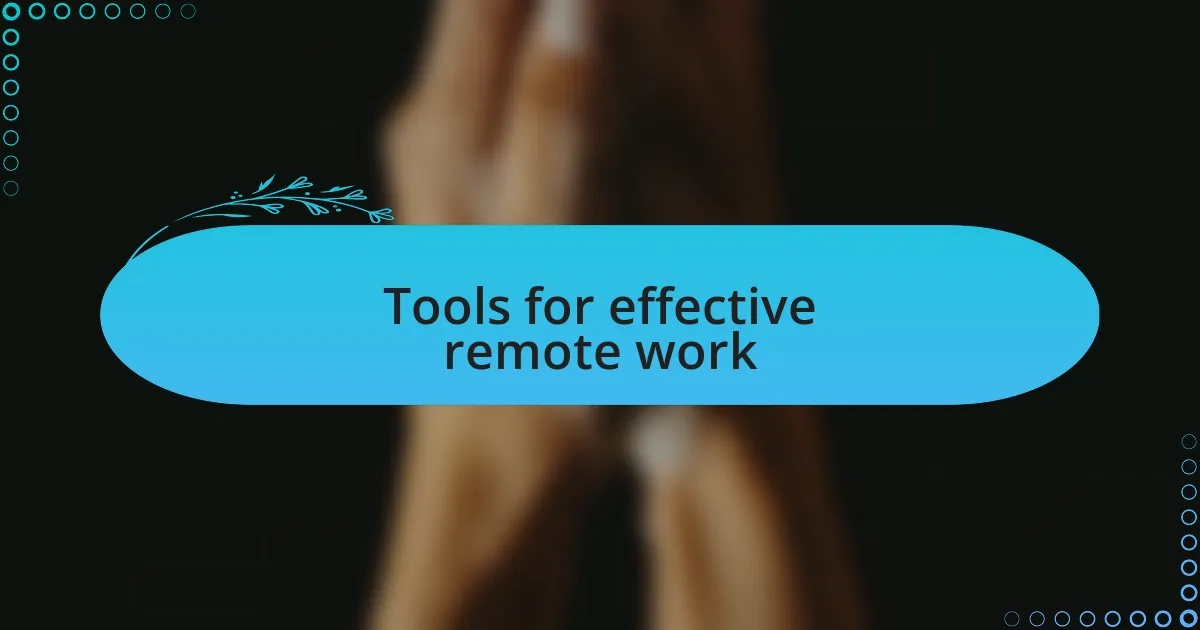
Tools for effective remote work
When it came to selecting tools for effective remote work, I discovered a few gems that truly transformed my experience. For instance, I started using project management software like Trello. It helped me visualize my tasks and keep track of deadlines. I remember the first time I moved a card from “In Progress” to “Done” – that small victory gave me an unexpected boost of motivation. Have you found a tool that makes your daily tasks feel more manageable?
Communication tools were another essential piece of the remote work puzzle. Transitioning to platforms such as Slack allowed me to maintain ongoing discussions with my team without the inefficiencies of email. The ability to quickly share ideas or feedback was a game changer. I still recall the excitement of collaborating in real-time on a document during a brainstorming session; it felt almost like we were in the same room. What communication tools have strengthened your connections with colleagues?
Finally, I realized the importance of utilizing time management apps to keep myself accountable and organized. Tools like Focus@Will became integral to my workflow; they provided me with tailored background music that helped me concentrate. I often found myself lost in my work during these focused sessions, emerging after an hour feeling accomplished and energized. What strategies have you discovered to enhance your focus during remote work?
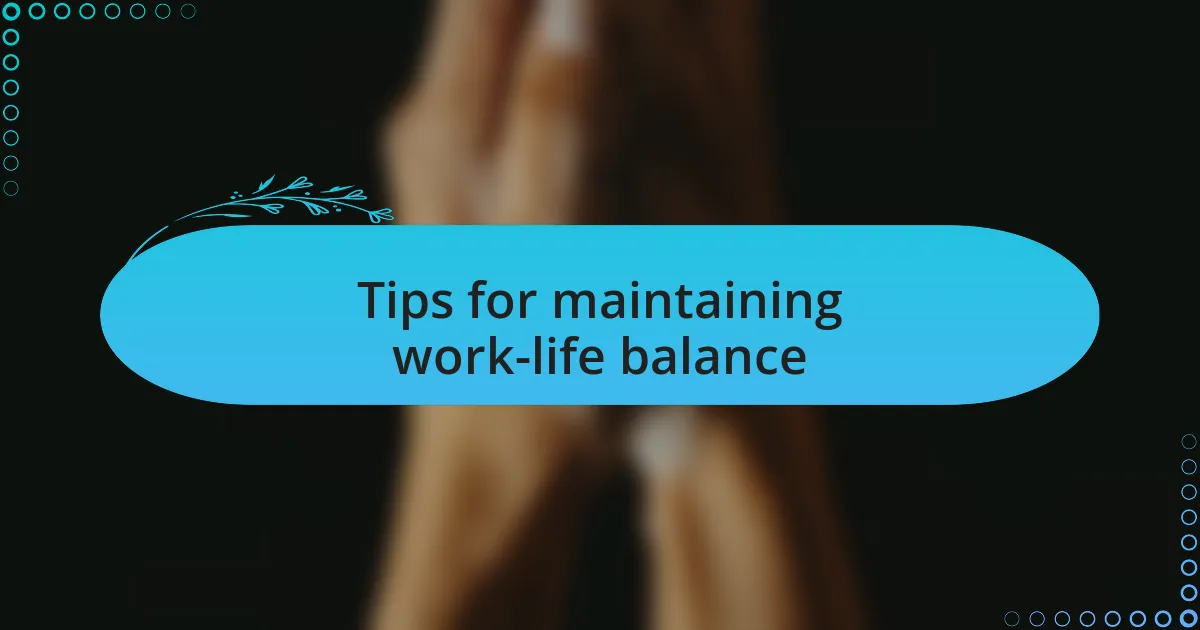
Tips for maintaining work-life balance
Finding the right work-life balance while working remotely can be challenging, but I’ve learned some valuable tips that have made a significant difference. One essential practice for me has been creating a dedicated workspace. I clearly remember the day I designated a corner of my living room as my “office” space. It mentally separated my work from my personal life, making it easier to switch off once the workday ended. Have you found a space that helps you focus better?
Setting specific work hours has also been crucial for maintaining that balance. At first, I would log in early and stay late, thinking it would boost my productivity. However, I realized this just led to burnout. Now, I strictly adhere to my working hours, and I even set a reminder to prompt me when it’s time to wrap up. It feels reassuring to have that cutoff, allowing me to immerse myself in different activities post-work. How do you manage your time effectively?
Moreover, I prioritize regular breaks throughout the day. I started using the Pomodoro Technique, which involves working for 25 minutes and then taking a 5-minute break. Those little moments of stepping away—whether it’s to grab a snack or take a quick walk—have drastically increased my energy levels and productivity. Have you experimented with breaks in your routine? It’s fascinating how a brief pause can lead to a more refreshed mindset.